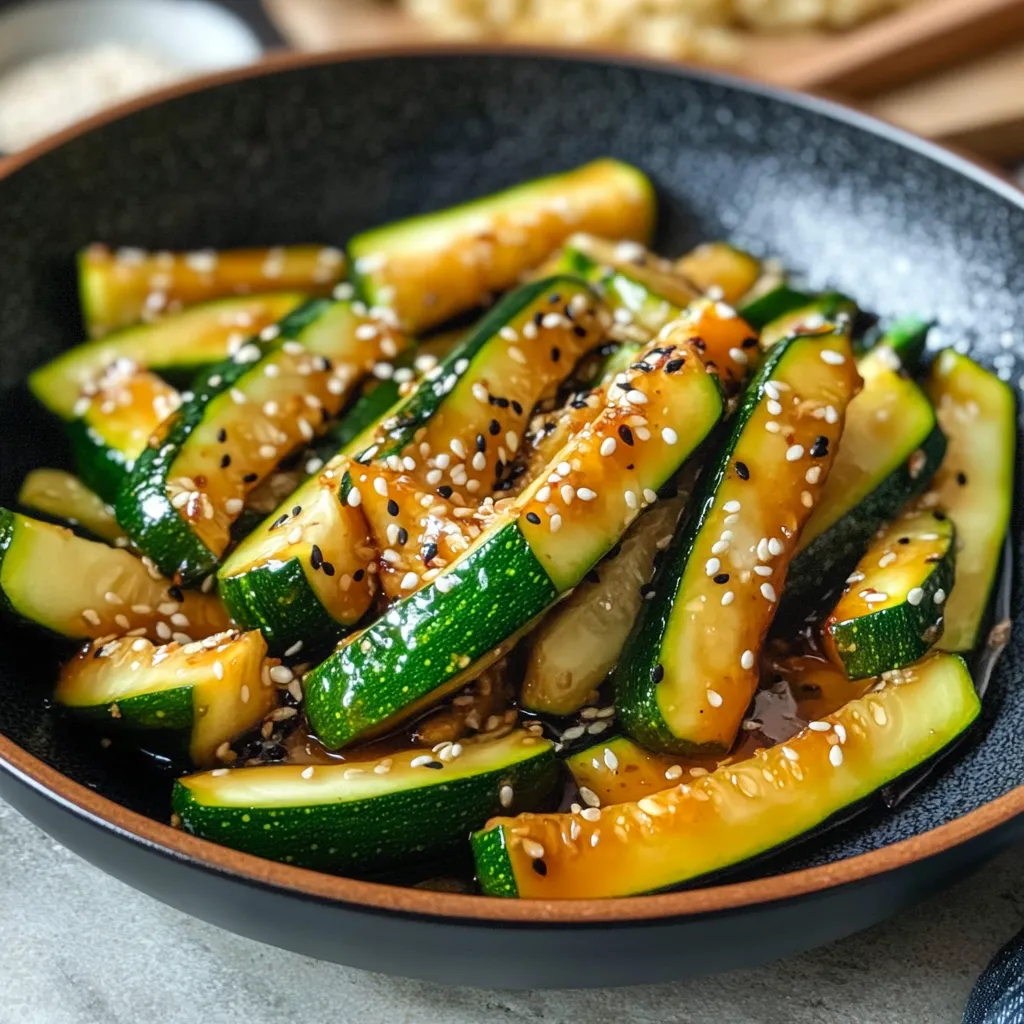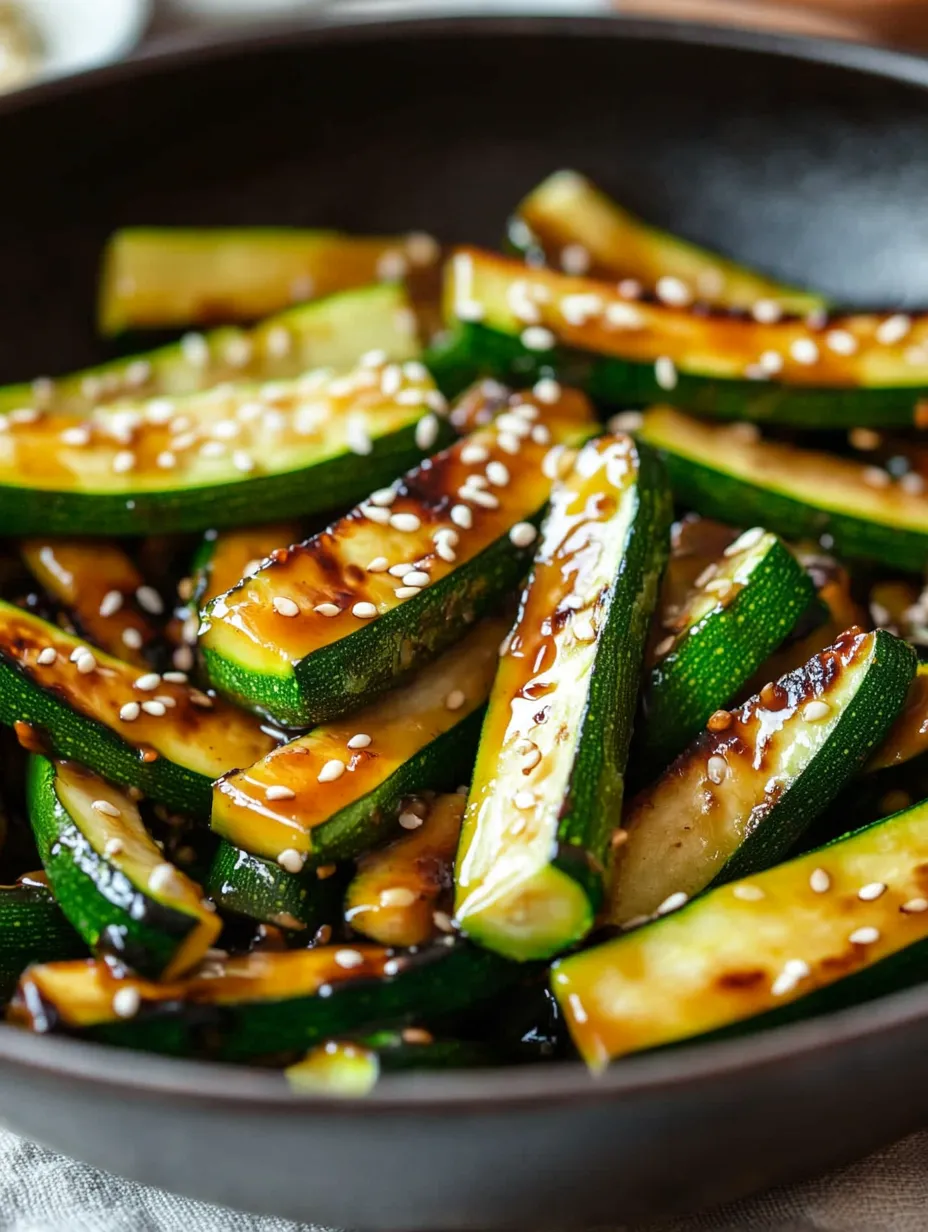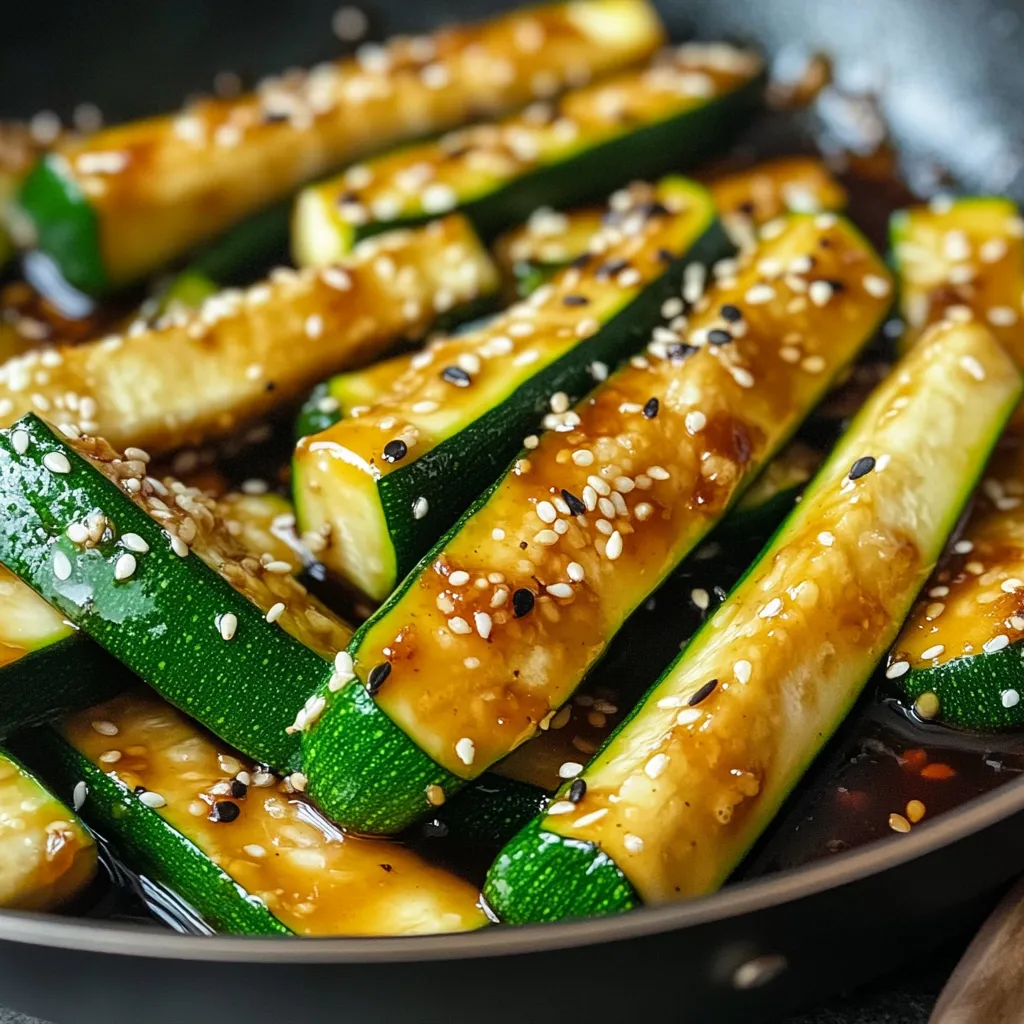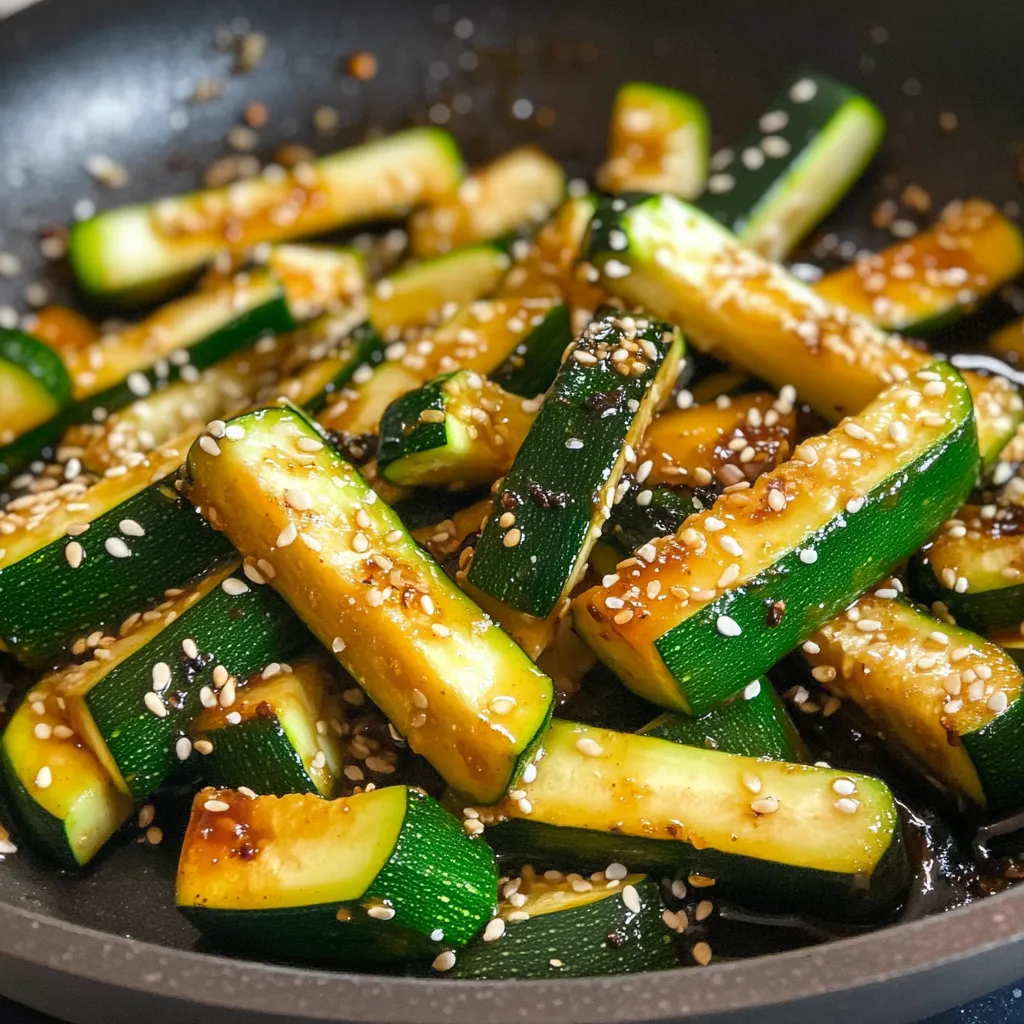 Pin
Pin
This hibachi zucchini recipe brings the Japanese steakhouse experience right to your home kitchen. With tender-crisp zucchini and onions coated in a savory blend of soy sauce, garlic, ginger, and sesame oil, it delivers authentic hibachi flavor in under 20 minutes. I discovered this recipe when trying to recreate my favorite steakhouse sides, and it's become a regular in my weeknight dinner rotation.
Last week, I made this for dinner guests who couldn't believe how closely it matched their favorite Japanese steakhouse experience. The secret is in getting that perfect tender-crisp texture and the flavorful sauce that coats each piece.
Essential Ingredients and Selection Tips
- Zucchini - Choose firm, medium-sized zucchini without soft spots
- Onion - Adds sweetness that balances the savory flavors
- Garlic and Ginger - Fresh is best for authentic flavor
- Soy Sauce - Use low-sodium if you're watching salt intake
- Sesame Oil - Adds that distinctive nutty flavor essential to hibachi cooking
The magic happens when high heat meets these simple ingredients, creating caramelized edges and a perfectly seasoned vegetable dish that's never soggy.
Detailed Cooking Instructions
- Step 1: Prep Your Vegetables
- Cut zucchini into uniform sticks (½-inch thick, 2-3 inches long) for even cooking. Quarter the onion from root to end, then slice into ½-inch pieces.
- Step 2: Heat Your Pan
- Use a large wok or sauté pan over medium-high heat. Add vegetable oil and heat until it shimmers but doesn't smoke, about 30-60 seconds.
- Step 3: Start with Onions
- Add sliced onions first, cooking for about 2 minutes until they begin to soften. This creates a flavorful base for the zucchini.
- Step 4: Add Aromatics
- Incorporate minced garlic and ginger, stirring constantly for 30 seconds. The heat releases their essential oils and aromas.
- Step 5: Cook the Zucchini
- Add zucchini sticks to the pan, cooking for 4-5 minutes. Stir occasionally, allowing them to brown slightly between stirs for enhanced flavor.
- Step 6: Season at the End
- Pour in soy sauce and sesame oil, then sprinkle with salt, pepper, and sesame seeds. Sauté one minute more until vegetables are tender-crisp and coated in sauce.
- Step 7: Serve Immediately
- Transfer to a serving dish while hot. Garnish with additional sesame seeds if desired for extra visual appeal.

I learned the importance of high heat and patient stirring after my first attempt resulted in steamed rather than sautéed vegetables. Now I ensure my pan is properly heated and resist the urge to constantly stir.
Nutritional Benefits
This dish isn't just delicious—it's nutritious too. Zucchini provides vitamins A and C, potassium, and fiber while being low in calories. The sesame seeds add calcium and healthy fats, while ginger offers anti-inflammatory properties. It's a guilt-free way to enjoy restaurant-quality flavor at home.

Cultural Significance
Hibachi cooking originated in Japan, where "hibachi" refers to a traditional heating device. The teppanyaki-style cooking we associate with hibachi restaurants developed in post-World War II Japan as a way to appeal to American tastes. This recipe honors that fusion tradition while making it accessible for home cooks.
Seasonal Adaptations
During summer's zucchini abundance, this recipe becomes a weekly staple in my kitchen. In winter, I substitute hardier vegetables like Brussels sprouts or cabbage, adjusting cooking times accordingly. The versatile sauce works beautifully year-round, making this technique valuable regardless of what's in season.
Chef's Essential Tips
- Use a large enough pan to avoid crowding, which causes steaming instead of browning
- Let the zucchini sit for 30-60 seconds between stirs to develop caramelization
- Add a sprinkle of red pepper flakes for a spicy variation
- For extra umami, add a teaspoon of oyster sauce with the soy sauce
- Toast sesame seeds in a dry pan before using for enhanced nutty flavor
I've perfected these techniques over many batches – particularly after discovering that constantly stirring prevented the beautiful browning that gives this dish its character.
This hibachi zucchini has become my go-to veggie side dish for weeknight meals. It pairs beautifully with fried rice and grilled chicken for a complete hibachi-inspired dinner, but it's equally delicious alongside simpler fare like grilled fish or a quick stir-fry.

The quick cooking time and minimal ingredients make it perfect for busy evenings, while the vibrant flavors transform ordinary zucchini into something special. Whether you're recreating a Japanese steakhouse experience or simply looking for a new way to enjoy summer zucchini, this recipe delivers restaurant-quality results with home kitchen simplicity.
Final Tips
- Double the recipe for meal prep – it reheats beautifully in a hot skillet
- Try with yellow squash or a combination of zucchini and squash for color variation
- Use coconut aminos instead of soy sauce for a gluten-free alternative
- Serve with a side of yum yum sauce for an authentic steakhouse experience
- Add mushrooms or bell peppers for a more substantial vegetable medley
Recipe FAQs
- → Why cut zucchini in sticks?
- Ensures even cooking and mimics restaurant style.
- → Can I use different vegetables?
- Yes, mushrooms or bell peppers work well too.
- → How do I know when it's done?
- Vegetables should be tender-crisp, not mushy.
- → Can I make this ahead?
- Best served fresh, but can be reheated briefly.
- → Is this authentically Japanese?
- It's Japanese-American steakhouse style cooking.
